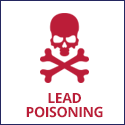Telford Taylor was the Chief Prosecutor at the Nuremberg trials.
He never talked about it in his Constitutional Law class.
For most of the semester, he discussed Marbury v. Madison, where the Supreme Court first exercised judicial review to declare unconstitutional a law passed by Congress.
So I told my guide that I wanted to begin my tour of Nuremberg in the courtroom where the trials were held.
The room has been open to the public for many years, but there was no exhibit about the trials until last year.
This trial is the “significant tribute power pays to reason,” declared Supreme Court Justice Robert Jackson, the first Chief Prosecutor, in his opening statement at the trial of Herman Goering and other high ranking Nazis and military officials.
In his remarks at the outset of the trial for German judges and lawyers, Taylor asserted, “The murderer’s dagger was hidden under legal robes.”
Our afternoon begins at the Nazi rally grounds, where Hitler would speak to 150,000 SS and SA members and 50,000 spectators. All that remains is trhe World War I memorial, which predates the Nazi regime.
Only one structure built for Hitler still stands, the partially completed Reich Congress. Modeled on the Roman Colosseum, it was to hold 50,000. There was no exhibit here about the Nazis until the World Cup was played in Nuremberg in 2006.
A stadium designed for 400,000 was never built. (They knew they’d have to hand out binoculars to spectators, notes my guide.)
At the end of the day, my guide says, “I guess you’ve been thinking about coming to Nuremberg for quite some time.”
” Freud would say, ‘Yes, since that constitutional Law class,'” I responded, “but I didn’t think about seeing the courtroom here until this past winter while working on the French railroad bill.”








